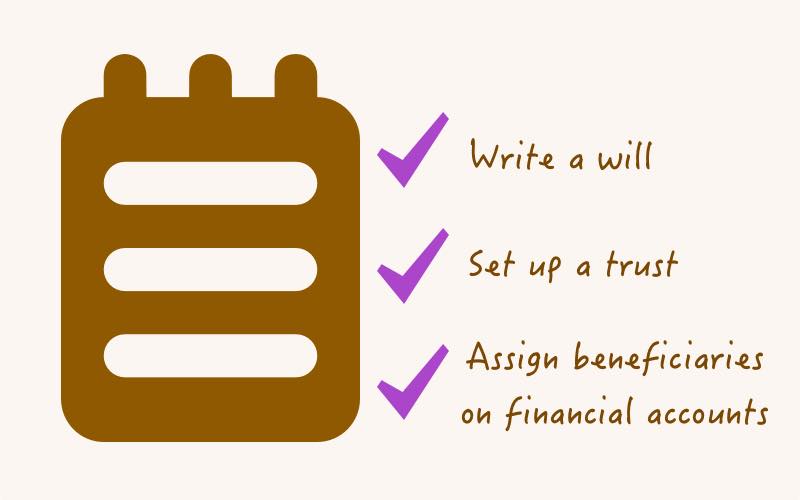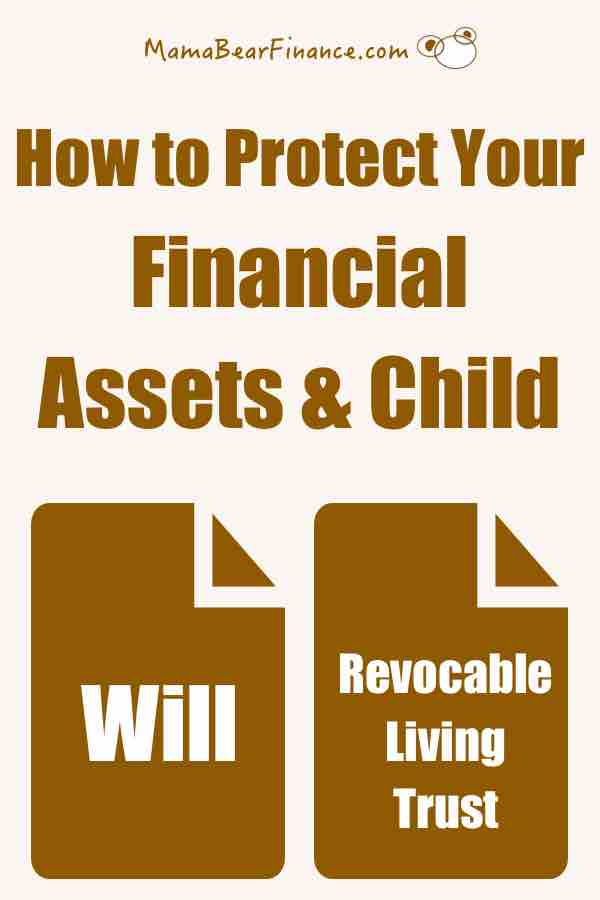Estate planning has been something that I put in the back burner, but it shouldn’t be so. Anytime we acquired an asset and/or have a child, the process of estate planning should begin.
But nobody wants to think about death or incapacitation. Being a new mom is challenging enough, and the thought of leaving your child and loved ones behind could be too much to bare.
This is why many people never started an estate planning in the first place.
And this is where the mistake begins.
Without proper estate planning, our assets might be hold up in probate courts and our child without a proper guardian.
This is why despite my lack of motivation to start the process, I took up the courage to get it done.
And now that it’s done, I feel so much more relieved!
Here are three ways you can protect your financial assets as well as your heir(s).

This post may contain affiliate links, which means I may receive a commission, at no extra cost to you, if you make a purchase through a link. Please see my full disclosure for further information.
3 Estate Planning That You Should Start Now
The three estate planning we will focus on today are drafting a will, setting up a revocable living trust, and assigning beneficiaries to our financial accounts.
While the first two can take some time and planning, doing the third one is relatively simple.
1. Drafting a Will
A will is basically a document of your final wishes upon death. The two most critical components of a will is the assignment of your assets and guardianship who will take care of your child.
But a will does more than just taking care of your assets and your child. It can also detail your funeral arrangement, gift to charity, and inheritance exclusion.
In a will, you’ll designate an executor who becomes the legal representative and oversees all of your assets as well as carrying out your will.
To draft a will, you can hire a lawyer, use online forms, or write it out.
If you have sizeable assets that are complex in nature, it’s best to seek advice from a lawyer.
Depending on the state you reside in, the legal requirement of a will can vary. For example, in California, a will must be signed by two witnesses who are at least 18 and whom shall not receive any gifts in your will or revocable living trust. Furthermore, a will does not need to be notarized according to California state law.
Some people mistakenly thought that a will is only reserved for the wealthy. However, this is simply not true.
In fact, any parent who has a dependent should draft a will even with the absence of any assets. This way, you can ensure that your child will be taken care of by the right people if something bad happens.
Unfortunately, even with a will in place, your family may still need to go through a public judicial process called probate.
Probate is a long and costly process that can be very stressful.
During this process, the court will assign guardianship for your child as well as distribute your assets based on your will. If you don’t have one drafted, the judge can make those decisions for you – yikes!
In order to avoid this process, most people set up a revocable living trust.
2. Setting Up a Revocable Living Trust
A revocable living trust is a legal entity that stores of all your valuable assets. It’s essentially like a treasure chest to which you hold the key.
It is ‘revocable’ because you can modify the trust at anytime.
And since you created the trust, you will become the trustor (or owner of the treasure chest). Meanwhile, you will assign trustees who will take over the trust shall you become deceased or incapacitated.
The key difference between a revocable living trust and a will is that a revocable living trust only stores your assets (e.g. real estates). It does not dictate who will become a guardian of your child or how your funeral shall be arranged.
Therefore, if you have assets and children, it’s best to have both a will and a trust. You may also want to consult a lawyer who can give you better advice that fits your personal situation.
The beneficial part of having a trust is to avoid the probate process. As mentioned earlier, this process will be carried out even with the presence of a will. A trust will have the authority to carry out the wishes in your will without the need of a public judicial process.
Because your heirs can avoid probate, they can save a ton in court fees as well as time and energy to acquire your assets.
To create a revocable living trust, you must have all of your finances in order. Here, you would decide what should go inside the trust.
If you have a good habit of managing your finances carefully, it becomes easier to gather your asset information. Check out this Ultimate Guide on how I organize my finances.
When transferring the asset to the trust, you will essentially transfer your titles of your assets from you to your trust. One of the most common assets to transfer is real estate because it has a legal title.
Once your assets are legally transferred to a trust, you become both the trustor and trustee. You will also assign primary and secondary beneficiaries.
Depending on state laws, the process of setting up a trust may differ. In California, for example, a trust must be notarized.
There are some other intricacies regarding what should be transferred inside a trust. For example, financial accounts such as 401(k) is generally not recommended to be transferred as you’ll incur a tax liability.
Instead, you can assign beneficiaries to your financial accounts.
3. Assigning Beneficiaries on Your Financial Accounts
Writing a will and creating a revocable living trust could take awhile to complete. For the most part, many of our financial accounts should have an area where we can assign beneficiaries. This is already a great way to ensure that your assets are transferred to the right people.
For example, in any retirement, brokerage, and bank account, there should be a form where you can assign beneficiaries as well as the % split for each.
This is a step that is quick to do and will help ensure your assets will have a future successor.
Consult With an Estate Planning Lawyer
Estate planning can be quite complex. Even though I have studied this subject, there may still be details that I missed.
Additionally, since our finances could be uniquely different, it may be best to consult with a legal professional. This is especially true if you have complex asset holdings.
However, if you don’t have complex asset holdings, the least you could do is to write a will detailing who will be the guardian of your child. The next thing is to assign beneficiaries to your financial accounts.
While a trust is a useful tool to avoid probate, it does require some time and upfront cost to set up. However, this step is mostly useful for those who hold real estate. If you’re in doubt on how to set one up, check out this online estate planning tool.
Hopefully this post has given you some insights on how to protect your assets and child. Even though estate planning is not a fun subject, it’s a crucial one to think about while we’re still healthy and able.
Above all, nothing beats the feeling of peace of mind when it’s completed!

PIN it

